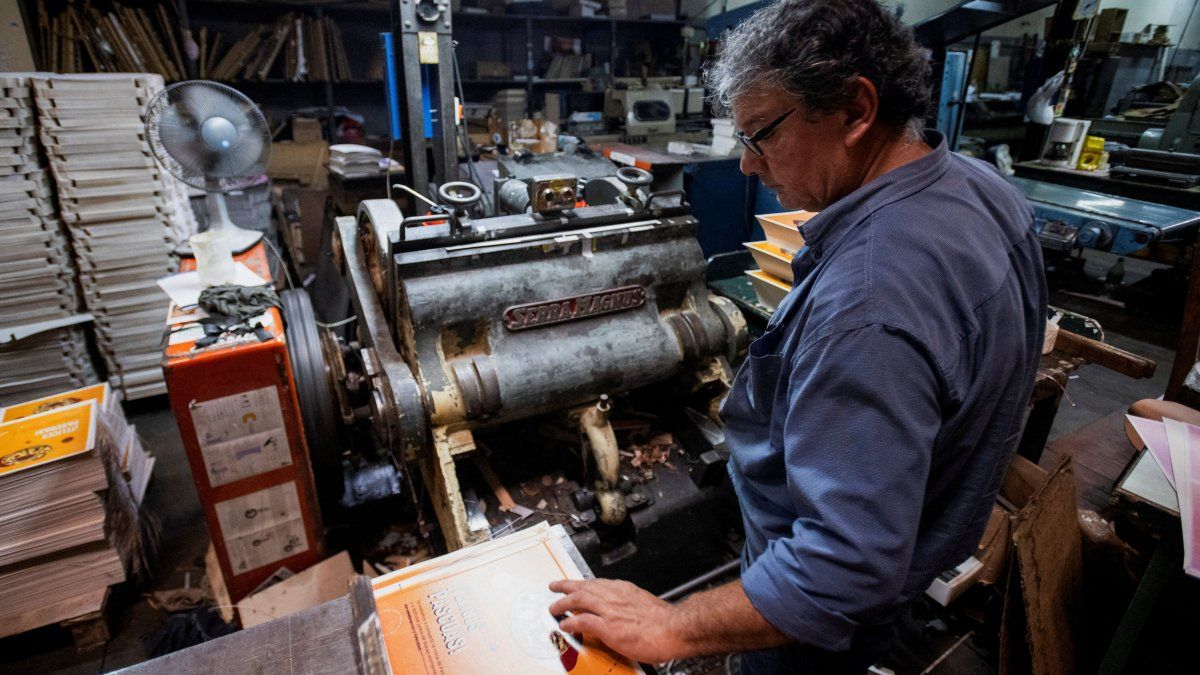For the BCRA, The decrease in inflation will come from the reactivation of credit by the private sectorWerning’s presentation explains it this way.
In front of investors gathered in New York, United States, the vice president of the BCRA raised a stage of stabilization and growth which began in May and will continue until December 2026, marked by three factors: reforms in microeconomics, shifting of the public sector to make way for the private sector (“crowding in”) and increased activity.
“One of the objectives of this bank’s management is for financial institutions to recover their primary role, which is financial intermediation: collect deposits and lend them to the private sectornot putting them at a rate in the Central Bank,” they explain to Ambit from the BCRA. “The ultimate goal is achieved when HE Credit is restored and banks begin to channel savings of people in productive, personal and mortgage loans,” the entity defines.
How would it be implemented?
In a context of “zero emissions” which characterizes Phase 2 of the economic program, Where would the money for the reactivation come from??
According to the economist Miguel Kiguelthe idea is that from now on the monetary base only increase as a result of banks increasing the amount of pesos to lend, lowering the Treasury’s interest-bearing assets (through LEFIs).
The official vision of the BCRA presented on American soil indicates that this dynamic will develop in a context of remonetization of the economy. In the planned stage of stabilization and growth, The monetary base should return to a “normal” level by the end of 2026.
For the consultant LCG, The credits slowly reappear on the scene. May was notable for the recovery in the loans and deposits in real terms (6.5% and 5.8% m/m realrespectively). Except for the fall in real guarantee loans, which fell by 1.1% monthly in real terms, the rest showed real monthly increases, highlighting the case of Consumption (8.9% m/m real).
In addition, in the first two weeks of June, total stock shows a recomposition (+14.5% m/m nominal), this time driven mainly by loans to companies.
The data is accompanied by the slowdown in inflation, which in May it was of 4.2%. For Julythe measurements of PriceStatsby Alberto Cavallo, They mark a monthly inflation of 2.6% as of July 22which would show the lowest level since December 2021.
However, for Harold Montaguchief economist of the consulting firm Vectorialwhich he directs together with Eduardo Heckerthe credits “They can help a little“, but “We are far from considering it a driver of growth.”.
The specialist warns that “We are at a very low level in comparative terms” in relation to credit to the private sector on GDP. Argentina is around 4% Of the total loans to GDP, this is historic flat of this indicator.
Instead, for Bruno Bonfantieconomist of EcoLatinathe growth of credit in pesos to the private sector would play a factor in favor of the Government’s strategy in two ways: revival of consumptionacting as a temporary substitute for decimated income, and redirection of excess liquidity in pesos that banks have from public securities to loans, reducing the system’s exposure to sovereign risk.
In this framework, since the last reduction of the Passive Passage rate, applied on May 13, credit in national currency “showed a real growth of 23% until mid-July“, the economist notes.
However, Bonfanti points out that this growth was mainly sustained by a change in the exporters’ financing strategy. “In numbers, more than half of this increase It is explained by the Advances and Documents (financing for companies), while Only a third is explained by Personal Loans and Credit Cards“, explains the member of EcoLatina. Plastics account for only 15% of the increase.
The impact of the interest rate on the Government’s strategy
Meanwhile, the question remains as to how a possible increase in the monetary policy rate, determined by the BCRA, could impact the official objective.Rising interest rates could disrupt credit demandFor Montagu, it will happen as long as “the rate goes up a lot”.
Anyway, understand that in Argentina The interest rate is not a driver of credit to the private sector either. “It is a variable that has a function more related to macro stabilizationin the fight with the dollar, which is a micro issue, directly related to the increase in loans. The vision of recovery in this sense is a little short,” defines the economist of Vectorial.
For BonfantiMeanwhile, in the link between consumption and income two elements appear to be considered: the level of previous indebtedness (both companies and individuals) and the outlook for revenue and sales going forward“A company is unlikely to choose to borrow to finance an expansion if its prospects do not reflect a significant increase in sales,” he said in an interview with this newspaper.
In this context, an increase in the interest rate of the system “could be an additional obstacle to credit to the private sectorHowever, if the result is greater macroeconomic stability and an improvement in the outlook for consumption, “the level of the rate could take a backseat.”
Is the economy on the mend?: the latest official data
For now, the economic recovery remains a prospect. According to the latest data from the Monthly Estimator of Economic Activity (EMAE), In May the activity increased 23% year-on-year and 1.3% compared to April.
It also indicates Vectorialthe contribution of agriculture to the growth of the EMAE (103.3% year-on-year) was such that, if this increase were not taken into account, the indicator would have registered an annual fall of 5.4%.
The two sectors within the EMAE that again repeated the largest falls were the Construction (22.1%) and the Manufacturing industry (14.2%) which together account for 22% of the Argentine economy.They are two key sectors, the first for its impact on employment and the second for its size in the total economy.“, the consultancy firm emphasizes.
The overall level of the EMAE, then, accumulates an annual fall of 2.9% in the first 5 months of the yearThe data is known in the same week that the IMF updated its growth outlook, pronouncing the fall of Argentine GDP from 2.8% to 3.5%By 2025, however, he expects the economy to rebound to 5%.
In turn, the Argentine Confederation of Medium-sized Enterprises (CAME) announced a 20.4% annual drop in June of the SME industry. It also marks a monthly drop of 3.1% and an accumulated variation of -19.2%. With an installed capacity of 56.8%the entity’s survey shows that the 43.4% of the companies point to lack of sales as the main obstacle facing the industry.
Source: Ambito




